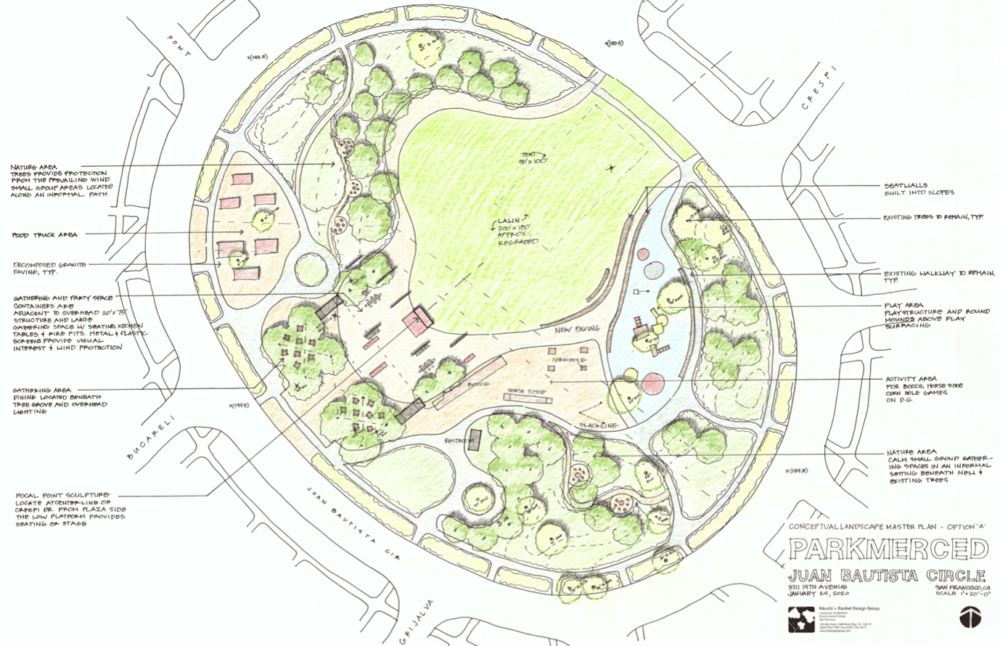Kikuchi + Kankel Design Group On Landscaping Parkmerced, the Largest Urban Multifamily Development in North America
The psychology of our physical world goes further than just making a space look beautiful...the amount of sunlight, protection from noises, the aromas from plants, and the stillness of the air are contributing factors to one’s happiness in a subconscious way.

When Maximus set out to breathe new life into Parkmerced, the largest urban multifamily community in North America, the company turned to its trusted partner, Kikuchi + Kankel Design Group, a leading landscape and environmental design firm known for bettering San Francisco’s urban landscape. Led by founder Steve Kikuchi, the firm shared in Maximus’ vision for the 150-acre community, which was to draw inspiration from both the natural surroundings and the human environment and to make nature an integral part of the lives of residents and visitors. We connected with Steve Kikuchi to gain insight into how he and his team reinvigorated Parkmerced to become a sustainable, design-forward gathering space with cross-generational appeal.
Let’s talk about the starting process for a project like Parkmerced. What kinds of site-specific qualities are on your radar?
After an initial walk-through with the client, we always return for a “site reconnaissance” in which we will spend multiple hours observing the climate, existing physical conditions, flora and fauna, people patterns, etc. Oftentimes, if it’s a public space like Parkmerced, we will return to observe the site in it’s worst conditions (a cold, rainy, windy day) to see how inhospitable it can be, but also on good days to see how pleasant it can be.
What’s the biggest transformation you made to the original design of the park?
Most of the original plantings were somewhat informal, in my opinion, and lacking a strong design statement. We added large masses of plantings of contrasting color and texture, making sure they weaved and flowed seamlessly with their surroundings. We feel that this symbolically captures the mood of the nearby ocean and beaches.
With multiple ways to access Parkmerced’s 150-acre apartment community, how do you let visitors know that they have arrived?
As part of our current re-design of Juan Bautista Circle—a large open lawn area—we are contemplating the inclusion of a strong focal element. This may be a sculpture piece, a clock tower, a fountain, or a large tree that acts as a landmark for the park. Our thoughts are that this will be visible from a distance to draw people to the site, but once someone is on the park site, it will be an interesting and pleasing feature to view from close-up.
We have a joke in the profession about attending dinner parties and being asked to give advice about a guest’s dying roses! A good landscape architect should know about roses, but also about site planning, environmental approaches to design, engineering for durability, social impact, and more.

Preliminary Drawing for Juan Batista Circle renovation
Would you agree that good design contributes to the emotional, mental, and physical well-being of people’s lives?
Absolutely. The psychology of our physical world goes further than just “making a space look beautiful”. A site’s proportions and scope, as well as the sequence of spaces as one experiences them, are important components. Other factors such as the amount of sunlight, protection from noises, the aromas from plants, and the stillness of the air are contributing factors to one’s happiness in a subconscious way.

You’ve worked with Maximus on a number of projects now. When it comes to their approach to design and development, what stands out to you?
We’ve worked on eight projects with Maximus to date, and their emphasis on quality development is certainly evident. I think that they recognize that quality design is important and that their residents are willing to incur the expense to live in a better environment. They are also actively improving and upgrading many of their properties, as opposed to settling for the mediocre.
As we enter a new decade, the issues of climate change and sustainability are as potent as ever. How does an industry leader like yourself join the conversation?
While no one profession can make the difference alone, landscape architects can assist by minimizing designs that increase carbon off-gassing. The too often used catch phrase “sustainable design” is a goal but is not a good description of what we are doing, as any change we humans make to the natural environment is in reality not a sustainable one. With an acceptance that any and all development has an adverse impact, we always push clients towards accepting alternatives to minimize the net impact.
The benefits of a public recreational area can be difficult to quantify. How do you measure the success of your projects?
Nothing is more rewarding than seeing a project being enjoyed. We have had clients contact us years later and express how the spaces we’ve designed are being embraced everyday. This is most gratifying and fulfilling. The users of a space are the true judges of a design, not a jury during a design competition. Some spaces may look good on paper or in photos, they may be innovative and intriguing, but if no one can bear to be in the space, it is not successful.
share story
